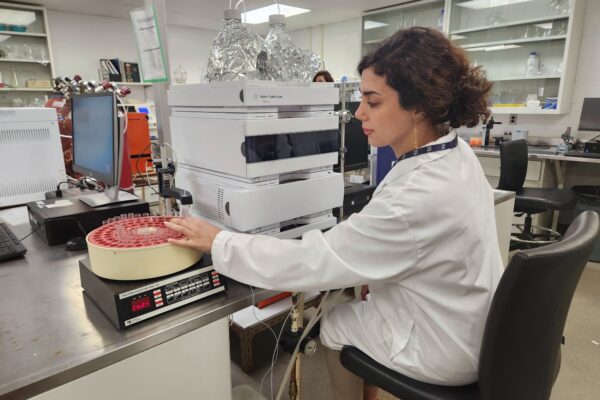- Research
-
YOU ARE
- Community member
- Future Student
- Student
- Professor
- Alumni
- Media
- Guidance counsellors
- INRS retiree
- Contact Us
- Newsroom
- Careers
- FR
-
Studies
We teach the next generation of researchers to develop scientific, social, and technological innovations.
-
Research
We find solutions through interdisciplinary research and industry or public and community partnerships.
-
INRS
We play an active role in Québec's economic, social, and cultural development.
An INRS team has developed a promising solution to enhance solar energy-fuel conversion.

Solar fuel allows to store and transport solar energy, while overcoming the variability of this intermittent renewable resource. However, the conversion of clean solar energy to fuel has some limitations. The team of Professor Dongling Ma of the Institut national de la recherche scientifique (INRS), in collaboration with Professors Aycan Yurtsever and Mohamed Chaker, has developed a promising solution. Their results were published in the journal Nature communications.
Converting energy to fuel is one of the promising and up-and-coming applications of metal–organic frameworks (MOF). This class of emerging crystalline polymers that absorbs photons from sunlight can be used in solar technology. The photon energy separates an electron (negative charge) from a hole (positive charge). If they recombine before they participate in oxidation and reduction reactions, the energy is lost and photocatalytic efficiency will be rather low. The fast recombination of charge carriers in these frameworks is the most significant limitation for their photocatalytic application.
The Advantage of Homojunctions
According to Professor Dongling Ma, homojunctions could overcome this inherent limitation. Made of semiconductors with analogous composition, homojunctions have attracted more and more attention for their superior capability of promoting charge separation.
“We are the first to synthesize MOF homojunctions. The enhanced charge separation results in a carbon dioxide (CO2) reduction with very high carbon monoxide (CO) fuel ratio and excellent stability.”
Professor Dongling Ma, scientific leader of the Nanomaterials Chemistry and Advanced Optical Characterization Lab.
Her team achieved the well-defined MOF homojunction by developing an easy one-pot synthesis route. They used hollow gold and silver nanocubes to induce the growth of the MOF in one-step. The MOF homojunction is composed of two stacked concentric MOF nanoplates, with the same orientation and uniform size.
“Our work provides a powerful platform to synthesize proficient MOF complexes and sheds light on the hierarchical structure-function relationships of MOFs,” Professor Ma says. “It opens the door to more effective conversion of solar energy to fuel, in order to replace oil and gas.”
About the study
The article “Phase-enabled metal-organic framework homojunction for highly selective CO2 photoreduction”, by Yannan Liu, Chuanshuang Chen, Jesus Valdez, Debora Motta Meira, Wanting He, Yong Wang, Catalin Harnagea, Qiongqiong Lu, Tugrul Guner, Hao Wang, Cheng-Hao Liu, Qingzhe Zhang, Shengyun Huang, Aycan Yurtsever, Mohamed Chaker and Dongling Ma, was published in Nature communications. The study received financial support from the Natural Sciences and Engineering Research Council of Canada (NSERC), les Fonds de Recherche du Québec-Nature et Technologies (FRQNT).

Green energy: from innovation to transition
You may also like

March 11, 2021
Canadian Irradiation Centre (CIC)Share


